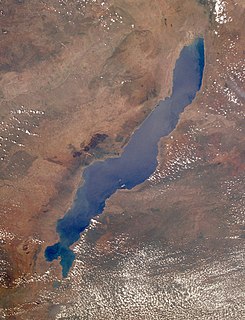
Lake Malawi, also known as Lake Nyasa in Tanzania and Lago Niassa in Mozambique, is an African Great Lake and the southernmost lake in the East African Rift system, located between Malawi, Mozambique and Tanzania.
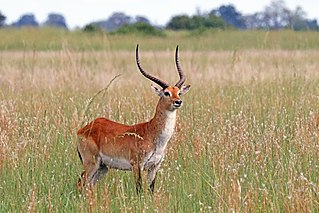
The lechwe, red lechwe or southern lechwe, is an antelope found in wetlands of south central Africa.

The Ganges shark is a critically endangered species of requiem shark found in the Ganges River and the Brahmaputra River of Bangladesh and India. It is often confused with the more common bull shark, which also inhabits the Ganges River and is sometimes incorrectly referred to as the Ganges shark. Unlike bull sharks, which need to migrate to salt water to reproduce, species in the genus Glyphis are true river sharks. The genus is currently considered to contain three recent species; genetic evidence has shown that both the Borneo river shark and Irrawaddy river shark should be regarded as synonyms of the Ganges shark, expanding the range of the species to Pakistan, Myanmar, Borneo, and Java. The species remains poorly known and very rare.

Hose's palm civet, also known as Hose's civet, is a viverrid species endemic to the island of Borneo. It is listed on the IUCN Red List as Vulnerable because of an ongoing population decline, estimated to be more than 30% over the last three generations and suspected to be more than 30% in the next three generations due to declines in population inferred from habitat destruction and degradation.
The Upemba lechwe is a species of antelope found only in the Upemba wetlands in the Democratic Republic of Congo. It was described in 2005, after analysis of 35 museum specimens collected in 1926 and 1947–8. It was previously overlooked due to its similarity to the lechwe K. leche, especially the black lechwe subspecies K. l. smithemani. Some authorities treat the Upemba lechwe as a subspecies, K. l. anselli, of the lechwe.

Ansell's mole-rat is a species of rodent in the family Bathyergidae. It is endemic to Zambia. Its natural habitats are moist savanna and miombo forests. It is noted for its very long tunnels, up to 2.8 km (1.7 mi) for a single colony of only ten individuals.
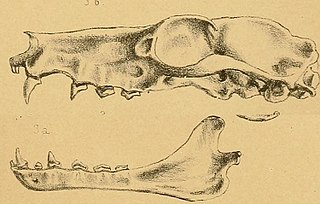
The Angolan epauletted fruit bat is a species of megabat in the family Pteropodidae. It is found in Angola and Namibia. Its natural habitats are dry savanna and moist savanna. It is threatened by habitat loss.

The Peters's epauletted fruit bat is a species of megabat in the family Pteropodidae. It is found in Angola, Botswana, Democratic Republic of the Congo, Malawi, Mozambique, Namibia, Swaziland, Tanzania, Zambia, and Zimbabwe. Its natural habitat is in riverine or evergreen forest, or moist woodland, where there are fruit-bearing trees.

The lesser Angolan epauletted fruit bat is a species of megabat in the family Pteropodidae. It is found in Angola and Republic of the Congo. Its natural habitats are subtropical or tropical dry forest, subtropical or tropical moist lowland forest, dry savanna, and moist savanna. It is threatened by habitat loss.

The Ethiopian epauletted fruit bat is a species of megabat in the family Pteropodidae. It is found in Burundi, Chad, Republic of the Congo, Democratic Republic of the Congo, Eritrea, Ethiopia, Kenya, Malawi, Mozambique, Nigeria, Rwanda, Sudan, Tanzania, and Uganda. Its natural habitats are dry savanna and moist savanna. It is threatened by habitat destruction.

The East African epauletted fruit bat is a species of megabat in the family Pteropodidae. It is found in Ethiopia, Kenya, Somalia, Tanzania, and Uganda. Its natural habitats are dry savanna and rocky areas. It is threatened by habitat loss.

Wahlberg's epauletted fruit bat is a species of megabat in the family Pteropodidae. It is commonly found across southern Africa.

Buettikofer's epauletted fruit bat is a species of megabat in the family Pteropodidae. It is found in Ivory Coast, Ghana, Guinea, Guinea-Bissau, Liberia, Nigeria, Senegal, and Sierra Leone. Its natural habitats are subtropical or tropical moist lowland forests, dry savanna, and moist savanna. It is threatened by habitat loss.
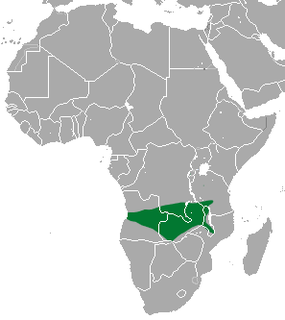
Dobson's epauletted fruit bat, or Dobson's fruit bat is a species of megabat in the family Pteropodidae. It is found in Angola, Democratic Republic of the Congo, Malawi, Mozambique, Rwanda, Tanzania, and Zambia. Its natural habitat is dry savanna.

Blasius's horseshoe bat is a species of insectivorous bat in the family Rhinolophidae found throughout large parts of the Mediterranean, Middle East and Northern Africa.
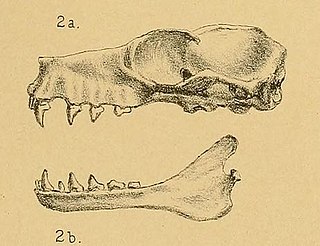
The minor epauletted fruit bat is a species of megabat in the family Pteropodidae. It is found in Zambia, Tanzania, Mozambique and Kenya.
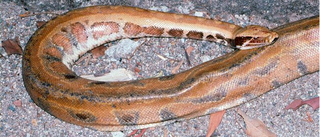
Python kyaiktiyo, the Myanmar short-tailed python, is a python species endemic to Myanmar that is known only from the holotype collected in Yetagon Myaung at an altitude of 390 m (1,280 ft). It has been listed on the IUCN Red List as Vulnerable since 2012.
Sturnira perla is a species of yellow-shouldered bat found in Ecuador.
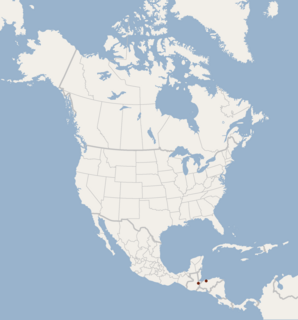
Menchu's little yellow bat is a species of vesper bat found in Central America. It was described as a new species in 2012.
Myotis diminutus is a species of mouse-eared bat found in Ecuador and Colombia. It was recently described as a new species in 2011.


















